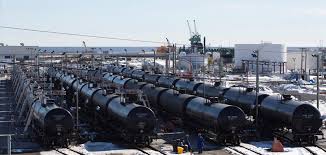Oil slips despite larger draw in U.S. stocks

OPEC expected to extend production cuts beyond March 2018
Oil prices rebounded from earlier losses, but ended lower on the day, after the Energy Department reported a larger-than-expected decline in U.S. inventories and a fall-off in weekly production.
The market was pressured by a bearish outlook by the International Energy Agency( IEA), which lowered its forecast for oil demand for 2018.
Oil has strengthened in recent weeks, but it is unclear whether U.S. crude prices will regain the high of nearly $53 a barrel reached in late September. A surprise build in gasoline inventories fed concern that crude stocks may begin to rise again, sapping some strength from the recent rally.
Brent crude oil settled down 69 cents, or 1.2 per cent, to $56.25 a barrel, while U.S. light crude ended down 70 cents, or 1.4 per cent, to $50.60 a barrel. Both benchmarks have risen more than 20 per cent from their lows in June as world oil markets tightened.
Crude inventories fell by 2.7 million barrels in the week to Oct. 6, compared with analysts’ expectations for a decrease of 2 million barrels. Distillate stocks fell by 1.5 million barrels, but gasoline inventories surprisingly rose by 2.5 million barrels.
“With the U.S. already out of the summer driving season, there will be less demand for gasoline over the coming weeks – this could result in weeks of crude builds as oil production in the U.S. remains high,” said Abhishek Kumar, senior energy analyst at Interfax Energys Global Gas Analytics in London.
The IEA said demand for OPEC oil would be 32.5 million barrels per day next year – around 150,000 bpd lower than the group pumped last month.
Gary Ross, founder of PIRA Energy and head of Global Oil Analytics for S&P Global Platts, said the global crude surplus has now largely been absorbed – and there was risk that OPEC could overshoot on its cuts.
“We think (Brent) should make a new high before the end of the year,” Ross said, speaking to reporters as the annual PIRA client seminar in New York. He said he expects crude to stay between $50 and $60 a barrel through the end of the year.
High U.S. production is pushing increasing volumes of U.S. crude into world markets, feeding inventories and undermining OPEC’s efforts to tighten the market <C-OUT-T-EIA>. U.S. exports fell in the most recent week to 1.27 million bpd, but U.S. exports have still exceeded 1 million barrels a day for three straight weeks, the first time this has happened.
Traders have expressed concerns that the United States will at some point reach its export capacity, though that has not been hit yet
Stories by Simon Ugwu








